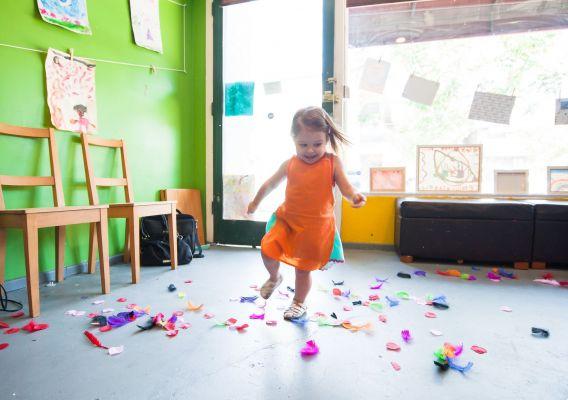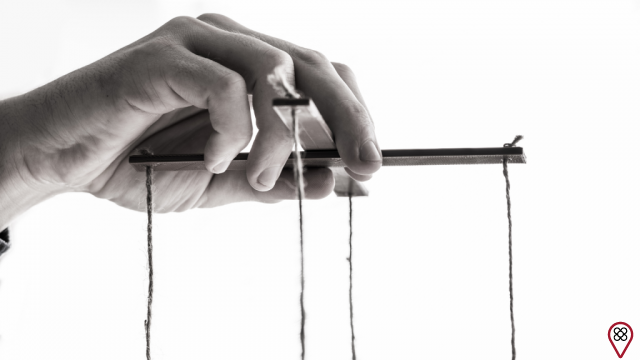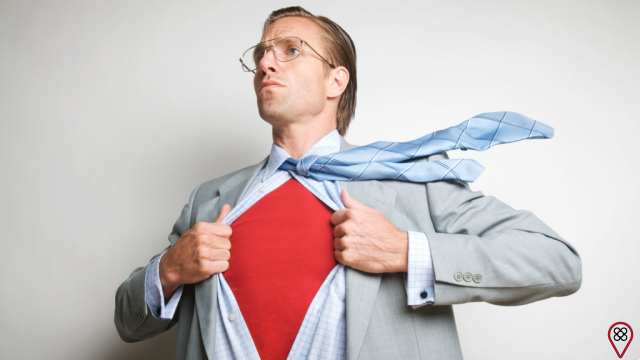Do you remember the movie animation Wall-E (2008), which portrays the planet Earth covered in garbage and the inhabitants living in a gigantic spaceship? For many decades, environmental issues are essential issues to be rethought and treated, for the maintenance of current and future life.
Non-Governmental Organizations, Institutions and Governments advocate global policies and strategies to protect the environment and generate sustainability. Awareness is a resource for individual actions to be adopted and become a global conduct converging towards these great goals.
Reflecting on local actions, an issue that has been gaining strength today is the quantity and perpetuity of waste generated with disposable materials, including diapers. For these, we already have the resumption of their original idea, diapers made with fabric, known as cloth diapers.
More modern than those used by some mothers and grandmothers we know, cloth diapers are more technologically developed - they are called ecological diapers. See the information below!
What are eco diapers?
Ecological diapers are cloth diapers developed to give comfort to babies, safety to mothers against leakage of urine and feces and to prevent diaper rash and contact dermatitis. They are more modern and more practical, with much less environmental impact than disposable diapers.
They are made with high-tech fabrics and with adjustments on the piece itself to accompany the child's growth phases. Reusable, they are made up of two parts that allow the baby's bottom to be waterproof and “breathable” at the same time.
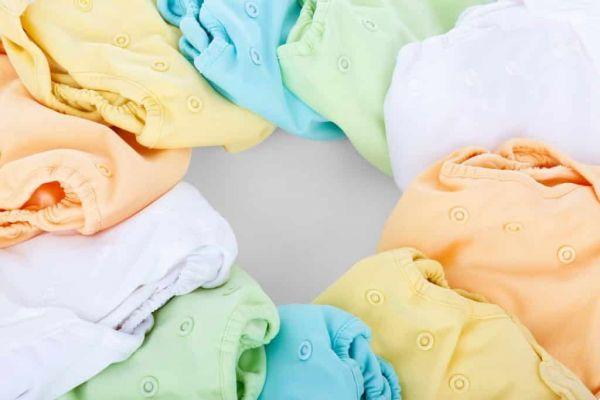
Ecological diapers can be used during the day, at night, on the beach and in the pool, they are very versatile and more economical, since from birth to the unfurl, around two and a half years, the child will use on average only 30 diapers (six daily changes) and can be used by other children.
The most positive aspect of ecological diapers is meeting the concept of sustainability, because even though the production of inputs has an impact on nature, their disposal is much lower compared to current disposable diapers, which already constitute 2% of the waste produced in the country.
According to one of the ecological diaper manufacturers, “We and David”, six daily changes are needed, an average of 5.500 disposable diapers for a baby during the first years of life. Calculate this in the country and in the world!
What are ecological diapers made of?
Ecological diapers are waterproof, made with two layers of fabric, which can be Dry Fit, Soft or organic cotton. Inside the ecological diapers, in a kind of pocket an absorbent is inserted, to retain moisture, also made of fabric. If it is of the model that does not have the pocket, the absorbent fabric is sewn to the inside of the piece.
Understand the fabrics:
Dry Fit is a microfiber fabric (very fine fiber, blend of elastane with polyamide and/or polyester), Nike's trademark. It is widely used in the manufacture of sportswear, because the liquid spreads on the surface, comes into contact with the air and evaporates quickly. In ecological diapers, it helps them stay dry.
The same technology is used by Adidas, with ClimaCool fabric, and by Reebok, with Play Dry.

Soft is a synthetic polyester fabric, with a soft and velvety texture, which does not retain moisture and ensures that the baby's skin will breathe. It is very useful and used in ecological diapers.
Organic Cotton is produced without the use of pesticides and pesticides, helping to preserve soil, air, water and living beings. In the composition of the fabric, polyester is used (in a very low percentage), to maintain the durability and resistance necessary for ecological diapers.
A little of history
Diapers were once made of moss, grass, rabbit skin, cotton, linen and flannel, in other times.
In the 1950s, the American Marion Donovan, created the “Boater”, a disposable cloth diaper, in which cotton “cloths” were inserted and adjusted to an internal opening of the piece, based on a waterproof cover produced with leftover plastic from bathroom curtains. Later, she replaced the “cloths” with sheets (15 to 25 of them) of tissue paper*, wrapped in a plastic film to provide protection.
The North American Procter & Gamble (P&G) already produced the first feminine absorbents, which ended up inspiring the current disposable diapers. The first design was developed by chemical engineer Vic Mills, who called it Pampers (Pampers) and came to market in 1959.
The model's success started in 1961 and although it did not require the use of pins, it depended on the use of masking tape. Over the decades, it went through innovations, until it reached what we know today, with the ease of adhesive and velcro-type tapes on the piece itself.
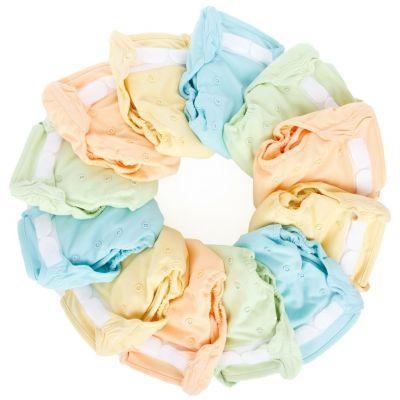
In España, disposable diapers arrived in 1975, manufactured by Johnson & Johnson and are so common that they made the country the third largest in the world that consumes this type of product. They have varying prices depending on the type, size and manufacturer and are not very affordable.
There is a worldwide trend of population aging, which is no different for España, which signals the possible need for disposable diapers by the elderly, increasing production, consumption and disposal and, therefore, environmental impacts.
*Tissue paper is produced from virgin or recycled cellulose fibers (extracted from trees). They are resistant, absorbent and soft. Given the very thin thickness, it is necessary to join several layers to obtain the final product, applied mainly to hygienic use, as is the case with paper towels, tissues, sanitary napkins and others. Consumption is increasing due to the rise in living standards and hygiene of the world population.
How are ecological diapers?
Ecological diapers have migrated from the traditional cloth diaper model to what looks more like a disposable diaper, including maintaining the format. Two models coexist on the market. Are they:
Ecological Fraldas “Pocket”
They have the shape of a disposable diaper, but with an internal pocket, where absorbent bands are inserted that will retain liquids. The absorbents are loose, also made of fabric and replaced during changes throughout the day and night. They should preferably be made of cotton and some mothers replace them with regular cloth diapers. The outside is waterproof, so you don't need plastic pants. The adjustment is made by velcro or plastic snap buttons.
Ecological Fraldas “All in One” (AIO)
This model integrates the cover and the absorbent in a single piece and with each exchange, the entire set is replaced. These ecological diapers are complete and the most similar to conventional disposable diapers. They are the most expensive and take longer to dry. The ease is in the reduced time in exchanges, but requires a greater number of parts. An inner layer of absorbent is sewn to an outer waterproof layer. The model has an adjustable velcro or plastic snap button closure.
Eco-friendly diapers have elastic at the back of the waist and legs. They can be purchased in one size, as they adapt, from the velcro or buttons adjustments to the size of the child. Some manufacturers produce diapers according to the mothers' request, who can choose the type of fabric, as well as colors and prints.
An ecological diaper, depending on the model and material used, varies in price between R$45,00 and R$90,00 (July 2020).
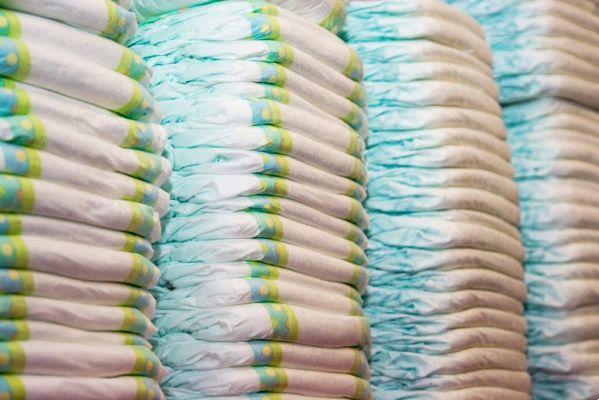
The sanitary pads can be purchased separately and cost between R$10,00 and R$20,00 each (July 2020). They are used in the AIO model.
Some mothers choose to use, over the pads, a biodegradable sheet, based on corn or bamboo to protect the baby's bottom and the diaper itself. It's very optional. On average, a pack of 100 or a roll costs between R$48,00 and R$100,00.
It is possible to find ecological diapers and absorbents (also called refills) in cheaper kits.
How are ecological diapers used?
In order to adjust the ecological diapers well to the baby and allow them to have high durability and effectiveness, here's how to use:
Wash ecological diapers before use, only with water. This will make it more absorbent. Maximum absorption should occur after the fourth wash.
For the “Pocket” model, open the ecological diaper, leaving the waterproof part down and insert the pad in the pocket, adjusting so that it takes up all the space and is very smooth. If you want one more pad, place it over your pocket. At this point you can still include a biodegradable paper, corn or bamboo based, on top. It will give protection to the diaper and with a harder poop, just remove it by joining the ends and discard it. It does not harm the environment, but its use is completely optional.
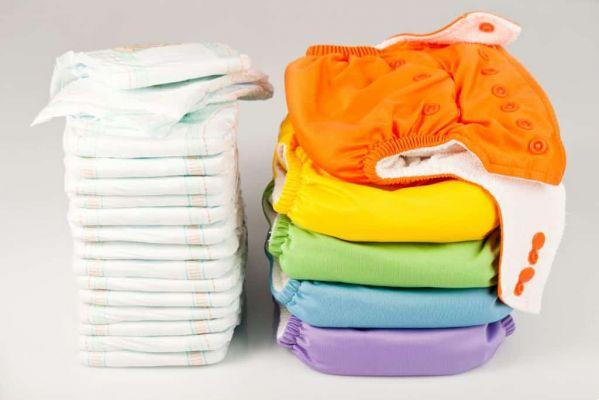
Place the baby on the open eco diaper, so that the side with the buttons or Velcro is facing up, passing between the baby's legs. Fasten one of the sides with the buttons or velcro, already adjusting well, without tightening. Repeat the operation for the other side.
Adjust the buttons or velcros on the legs, without letting the inner parts of the eco diaper show. Don't make the elastics tight, just tight.
Make sure the eco diaper is adjusted to the baby's butt, waist and legs.
To remove the dirty or wet eco diaper:
If it's the “All in One” model, just open the buttons or velcro and remove.
If it is the “Pocket” model, open the buttons or Velcro, remove the diaper, preferably pulling it from the waist down, so that the butt and legs are free from it.
Remove the absorbent(s), proceeding with the first hygiene care.
Make sure the diaper is not dirty or wet. Restart the exchange process.
How to take care of ecological diapers?
Eco-friendly diapers can last a long time. Some precautions must be taken. Find out how to proceed:
Dispose of feces, preferably in the toilet.
Eliminate excess residue with superficial washing, which can be cleaning with running water on the fabric.
Soak before final washing. The sauce can be pre-washed in the washing machine, as well as the wash itself, which makes the process easier. If ecological diapers are reserved for later washing, they must be stored in a bucket with a lid or with a mesh.
Use a mild detergent, coconut or biodegradable soap, without phosphates and with minimal additives or chemicals, or use half the amount of detergent indicated in machine washes.
Use hot water to remove stains or soap residue, but do not boil the garments, as synthetic fabrics may be damaged. It is possible to leave it in the sun, with coconut soap, until it acts and then wash normally.
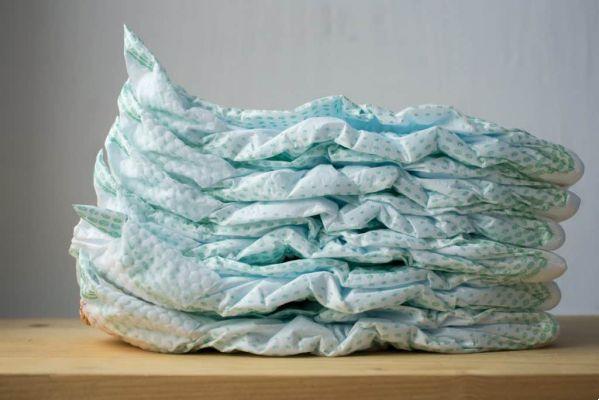
Avoid using vinegar, or baking soda, in soaks or washes, as they shorten the life of eco-friendly diapers.
Use an alcohol cap on the machine to disinfect ecological diapers and remove residue and oil that accumulate on the garment with use.
Eliminate the use of bleaches, softeners or any other chemical additives.
Dry ecological nappies in the shade and outdoors, avoiding, if possible, machine drying.
Warm iron the parts to complete the cleaning and preparation for the next use. Some manufacturers advise against ironing parts.
What are the best eco diapers?
There are several manufacturers of ecological diapers on the market, but when choosing the best ones for the baby, the evaluation will be based on efficiency, comfort and according to the family budget, because some are imported and cost more. Give preference to national brands!
Following certain criteria will help in the decision. Find below:
Size — it is possible to buy ecological diapers in sizes ranging from NB (newborn) to XL, but the one size is the most economical way and fits babies from 2,7 kg to 17 kg, with an average of eight options of adjustment.
Manufacturing material — this is the type of fabric used in eco-friendly diapers that will ensure baby comfort and efficiency. The inner part must be made of breathable, soft and anti-allergic fabric. On the outside, or on the cover, it must be made of polyamide, polyurethane or polyester, to be light, resistant and waterproof.
Closing — Velcro closure on ecological diapers is very easy, but the best option is the button one, because it is safer, more practical and more resistant to machine washes. The important thing is that the diaper is well adjusted to avoid leaks.
Type of absorbent — it may be that the absorbent is not included in the purchase of the diaper, even if the model needs it, being purchased separately. The most effective of all in terms of absorption is charcoal. Other materials are microfiber and bamboo, also effective in absorption. As for contact with the baby's skin, only microfiber should be avoided. Having a wider brim, it will provide a greater extent of absorption, an important factor in the choice.
Eco-friendly diapers in parents' modern life
The reality is that most families that buy disposable diapers are mothers and fathers who work outside the home and leave the baby in the care of other trusted people or in day care centers and nurseries, finding unpreparedness and even ignorance in the use of diapers. ecological.
Another issue is the time and work involved in adopting these diapers, with care that is not, in fact, congruent with the hustle of modern life, requiring a true desire to contribute to the management of environmental impact and a greatly improved family organization, especially until practice is acquired or during the puerperium.
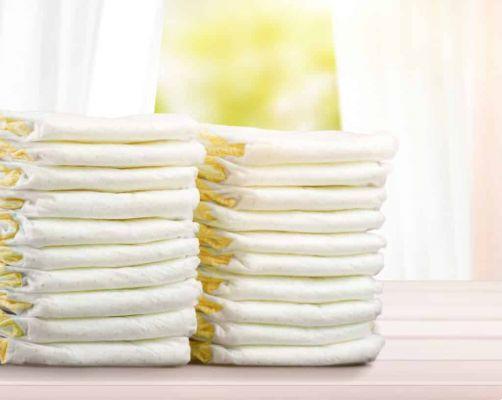
Advantages of using ecological diapers
It is important to consider that the initial difficulties of family members adapting to ecological diapers can be greatly minimized by the advantages of their use.
Savings — the initial cost of purchasing ecological diapers is higher, however, in approximately two and a half years with six daily changes, they will cost four times less than their competitors, disposable diapers.
Health — ecological diapers do not contain chemical substances in their composition. They drastically reduce the incidence of contact dermatitis, diaper rash and redness and even dispense with the use of creams and ointments.
Ease — they can be washed in the washing machine and for some models, just replace the absorbent part, without the need to repeatedly wash the entire garment.
Durability — eco-friendly diapers are durable and last for many years to be used by other children.
Sustainability — as the name implies, they are ecological, generating less environmental impacts, even with the consumption of water from washing and electricity consumption due to the iron. They reduce the production of non-biodegradable waste, in addition to waste and substances resulting from the production chain.
Beauty — as they are made of fabric, ecological diapers have different prints and colors, and can be coordinated with the baby's clothing.
Disadvantages of using eco-friendly diapers
Time — ecological diapers, especially when there is no practice and depending on the model, require more time to change and require availability for cleaning, while disposable diapers are simply placed in the wastebasket.
Sanitation process — a little longer, requires manual steps for the completion and differentiated storage of dirty parts.
Odor — Unlike disposables that have chemicals to soften the smell, eco-friendly diapers are natural and the odor tends to be easily noticed.
Weight — as ecological diapers are less compact and all the material they are made of is fabric, they are heavier than disposable diapers.
Use outside the home — they accompany babies on outings, however, if they need to be changed, parents will have to pack them in a plastic protector or waterproof bag, as the ecological diapers will have to return home. The same will happen with the separate absorbent parts, if it is the model.
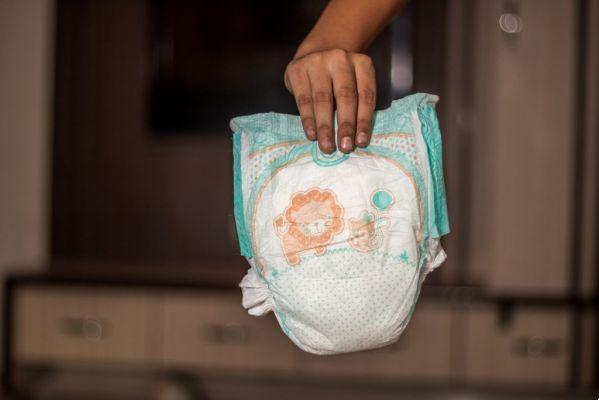
How long do eco diapers last?
Keeping the care of washing and using ecological diapers, the shelf life is very long, and can be extended to the use of other children for many years.
An estimate points out that they last at least the period of three unfurls, which would be around eight years, but it depends on the frequency of washing.
According to the manufacturer “We and David”, a single ecological diaper withstands around 800 washes, which represents a long life and extraordinary savings.
Disposable diapers and ecological diapers
Depending on the composition, the manufacture of disposable diapers involves resources such as trees for the production of cellulose pulp, oil (a non-renewable source of energy) from which synthetic polymers (plastics) are obtained, applied to the absorption and retention of liquids, polypropylene and polyethylene. that make up tapes, elastics and adhesives, as well as chemical products such as chlorine, used as a bleach, which have been researched in terms of harm to babies' health, as well as the environmental impacts of waste and residual substances generated during the production chain until the final consumption.
The time it takes for a disposable diaper to decompose in landfills is an average of 500 years. Disposable diapers already represent about 30% of the world's non-biodegradable waste, with immense environmental impact. Hybrid diapers and biodegradable disposable diapers have been improved, but there are issues related to the final price and even those involving the production chain that have not been resolved.
Although ecological diapers also involve in their production process resources such as cotton planting, use of polymers (elastic and polyester, elastane and polyamide-based fabrics), fuel energy and water, among others, which generate environmental impact, this tends to be much smaller, especially with regard to consumption containment and smarter disposal.
You may also like
- Find out how Nós and Davi help preserve Life on Earth
- Perform your child's nighttime potty training without trauma
- Reflect on how the waste we produce affects the world
Suggestions
There is no alternative without impacting nature regarding the use of any type of diaper, because production and logistics involve inputs necessary for the final product until it reaches the consumer, with so many implications and variables that choosing the diaper to be adopted for the children, becomes quite complex, considering an ecological and conscious option.
In any case, maintaining the current behavior is not appropriate, especially considering the issues related to increased consumption and the growing production of non-recyclable and non-biodegradable waste.
For now, a good start might be to adopt a mixed version, with the child using ecological diapers most of the time, at home, and using disposable diapers outside the home, for example on a walk, in order to reduce consumption and discard the latter. It is worth remembering that ecological diapers when they have to be discarded will decompose in approximately six months.
It is necessary to think about the adaptation of the baby and the family to the use of ecological diapers, privileging what is beneficial and practical in everyday life, but the awareness of how the planet will be for this and other generations is a crucial issue and of immediate collaborative action. , because living in a big spaceship, off Earth, is really fiction. Adopting ecological diapers for children is an act of present and future love! Think about it and join this cause. Adopt a posture of respect for everyone's life!








